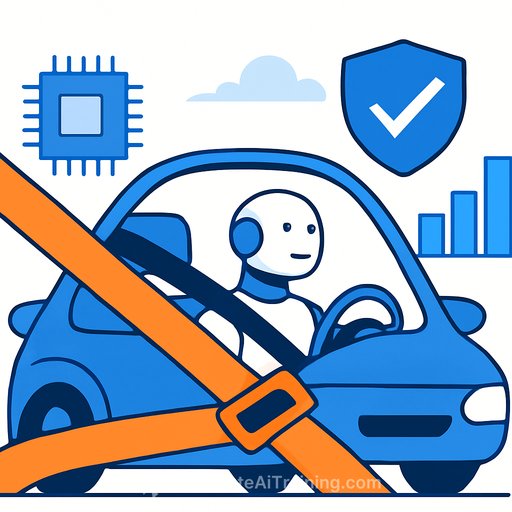AI Insurance Is Quietly Setting the Guardrails for AI Agents
Insurers see a clear signal: AI agents are creating real losses, and the market wants protection. As government rules lag, a new class of policies is pushing companies to prove their systems are safe, reliable and accountable before they get covered.
For customer support leaders and insurance professionals, this is more than risk transfer. It's pressure to adopt standards, document controls and treat AI failures like known, insurable events.
Why this matters now
Enterprises are already feeling the cost. A recent survey found over 90% of businesses want protection against generative AI risks, and 99% report losses tied to AI - with nearly two-thirds topping $1M. Traditional policies are starting to exclude AI, so companies need new approaches and auditable safety proof to qualify for coverage.
Read more on the industry's view of AI risk at the Geneva Association.
What insurers are offering
A handful of carriers and startups are building products for AI-agent failures. Policies are starting to cover issues like hallucinations, IP infringement, discrimination, data leakage and reputational harm. Some offerings reach limits up to $50M, with payouts tied to clear evidence of AI-caused loss.
Insurers are also adopting model testing and performance evidence - not just historical loss data - to price risk. Think of it like the early days of cyber insurance: small at first, but growing fast as standards mature.
The push for standards: from "trust us" to "show us"
One approach gaining traction is third-party certification of AI agents. A new standard (AIUC-1) audits six pillars: security, safety, reliability, data and privacy, accountability and societal risks. Certification gives buyers confidence and helps underwriters decide what's insurable.
There's also work underway on a self-harm safety standard - crucial for any AI that interacts with vulnerable users. The goal: reduce harmful responses and give insurers a clearer view of controls that actually prevent loss.
Practical risks insurers are pricing
- Data exposure: PII leaks, training on sensitive data, insecure prompts and logs.
- Jailbreaks and prompt injection: Model instruction override and third-party data poisoning.
- Hallucinations: False statements that trigger financial loss or defamation.
- Bias and discrimination: Hiring, credit, claims or support decisions that violate law or policy.
- IP issues: Infringing outputs, unauthorized training data or rights mismanagement.
- Safety harms: Content that encourages self-harm or dangerous behavior.
- Reputation: Public incidents that damage brand trust or trigger churn.
What customer support leaders should do now
If you run AI in your contact center, assume your insurer (or your CFO) will ask for proof. Your best move is to operationalize guardrails and make them visible.
- Document your system: Purpose, model versions, data sources, providers, and where the agent is deployed (IVR, chat, email).
- Gate the agent: Strong content filters, PII scrubbing, rate limits, retrieval whitelists and output checks before responses hit customers.
- Human-in-the-loop: Clear escalation rules, confidence thresholds, and fast handoff to agents for sensitive intents.
- Red-team testing: Regular jailbreak and prompt-injection tests; track findings and fixes.
- Safety playbooks: Self-harm, harassment, threats, medical/financial claims - with scripted responses and routing.
- Logging and audit trails: Store prompts, outputs, retrieval sources, overrides and who approved changes.
- Vendor accountability: DPAs, security attestations, rate-limited APIs and clear SLAs for downtime and model changes.
Metrics underwriters want to see
- Containment and deflection: % resolved by the agent without human help.
- Accuracy and truthfulness: Hallucination rate by intent; grounded vs. ungrounded answers.
- Safety outcomes: Incidents per 10k interactions, self-harm flag rate and response time to escalate.
- Security posture: Jailbreak attempts blocked, prompt-injection success rate, PII exposure rate.
- Governance cadence: Red-team frequency, patch/fix timelines and change-management approvals.
What insurance underwriters should require
- Evidence of testing: Formal model evals, scenario-based red teaming and production monitoring.
- Policy maps: How legal, compliance and brand rules are encoded in prompts, tools and guardrails.
- Segmentation: Separation of training, testing and production; strict access control to prompts and keys.
- Incident response: Defined RACI, notification timelines, legal review and customer remediation steps.
- Third-party validation: Certifications or audits aligned to recognized frameworks.
Frameworks that help
If you need a starting point, look at guidance like NIST's AI Risk Management Framework for structure around mapping, measuring and managing AI risk. It's not a silver bullet, but it aligns well with what insurers want: repeatable controls and proof they work.
NIST AI Risk Management Framework
Regulation meets market pressure
Governments are exploring "independent verification" - private evaluators who certify systems against defined risk levels. Insurance fits neatly here: carriers can require certifications as a condition for coverage, speeding up adoption of better safety practices without waiting on full legislation.
The likely outcome is a mix of public rules, private audits and insurance-backed incentives. That combo gets companies to safer operations faster - and keeps losses insurable.
A simple underwriting checklist for AI agents
- Clear use case and risk assessment documented.
- PII handling, retention and encryption defined.
- Guardrails: filters, retrieval policies and human escalation.
- Formal testing for jailbreaks, hallucinations and self-harm prompts.
- Production monitoring with incident thresholds and alerts.
- Vendor SLAs, DPAs and change-control agreements on model updates.
- Post-incident plan with customer notification and remediation.
Bottom line
AI agents can pay off in support and operations, but the losses are real and measurable. Insurers will cover the risk - if you can demonstrate control.
Build the evidence now: test rigorously, log everything and align to recognizable standards. If you want coverage, show your homework.
Level up your team
If you're rolling out AI in support or risk roles and need to skill up fast, explore practical learning paths by job role and popular certifications:
Your membership also unlocks:









